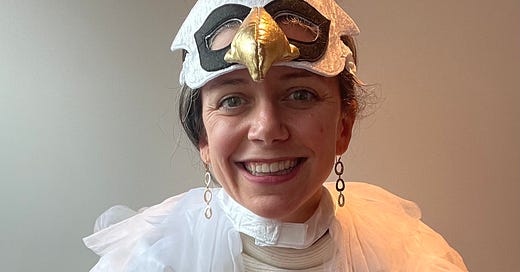Today’s update is a round up of recent media mentions and podcast interviews.
Back to school - we are deep in back to school during the pandemic. These first colds have been startling for many parents. We are out of the 6-8 colds a year is normal for a child mindset. Viral infections add stress and chaos to our lives, but they do typically pass without much fanfare.
This chart from the CDC summarizes it, with RSV we had a long dip in infections and now effectively… it’s back and still surging nationwide. Since we are likely doing more testing now than pre-pandemic, it’s likely still not as bad as the winters prior to the pandemic because of social distancing and masking.
In this article for Romper, I discussed how you can’t tell whether it’s just a cold or COVID-19 without a test. Especially easing into the holiday season where there is more mixing, indoor time, and travel, testing remains key to promoting safety. With more vaccines for children rolling out and with national COVID rates on the decline, it’s quite likely that the guidelines may change mid-year, which I discussed in this interview with Forbes.
Everyone’s thoughts have been on the vaccine. Why did it take so long to get the children’s vaccine going? In this piece we talk about how the FDA balances maximizing testing and safety. Delays to the EUA being approved for children’s COVID vaccines lead to more cases in children as well as the adults who care for them, but hopefully for children 5 and up, a vaccine is really close.
The VRBPAC approved the 5-11 year old vaccine 10/26 and this week on 11/2 the FDA will meet to hopefully issue the EUA. The only ongoing argument is about whether the direct benefit to children of a COVID vaccine given that COVID infections are relatively low in severity warrants an emergency application vs. a full approval process. No FDA physician or scientist has expressed concerns about the risks of the vaccine. The likely risks of the vaccine are smaller than the risks of COVID infection.
For many parents like me, the indirect benefits of the vaccine - worrying less about your child infecting others, about precautions, about quarantines and inconsistent childcare - tip the scale dramatically towards the “give me the vaccine already” side. If you’re feeling uncertain, check out this podcast episode I recorded with Simple Families on how we’re both approaching our decision making process.
For those parents who are more hesitant, I’d advise you to seek out a single trusted source of guidance (like your pediatrician!) and live in the moment. If you want to wait a few weeks you will have more information and that may make it easier for you to decide with confidence. By waiting for “postmarking surveillance” data you will get the exact numbers for the rare side effects that occur in groups of tens of thousands or millions.
A small number of children per million second doses, most likely boys, will have some myocarditis associated with the vaccine. Hopefully it’s less than the teenage groups because the vaccine dose is 1/3rd. That means we are talking about something that may occur between 30 and 70 times per million second doses. For me as I approach a decision knowing that precise number doesn’t really matter, rare is rare and both extremes of the number are less than the likelihood of COVID infection associated complications.
Logistically, as I told Chalkbeat, the vaccine roll out is likely to face some bumps. Schools, pharmacies, hospitals, public health departments and doctors all may stock and distribute the vaccine depending on where you live. I ordered the vaccine for my clinic the first hour I could and it hasn’t shipped yet despite the likely approval this Tuesday. I’m hopeful that I’ll find a way to obtain the COVID vaccine for families who want it right away, but I don’t know how it’s going to go yet.
Rounding out the infectious disease news, I spoke with Melinda Moyer and The NY Times about this flu season. I recommend the flu shot every year for everyone and explain how to know if your child may need two flu shots. This pandemic has reminded us that we’re all connected, and we all want to avoid both getting sick with influenza and causing false alarms about COVID.
In non-covid related news, the Nourished Child podcast had me on to discuss trauma and chronic stress. A robust literature about adverse childhood experiences (loss of a loved one, a parent who is incarcerated etc) informs our understanding of the health harms associated with “big t” Trauma. But we can extrapolate from this literature the fact that “little t” trauma like meal-time arguments and drama can add up to cause harm both for parents and children. In the episode, discuss ways that parents and teachers can support children facing their pandemic and non-pandemic related stress.
I’m taking suggestions for my next newsletter post, if you have a parenting question or children’s health topic you’d like me to address drop it in the comments.
Happy Halloween! I hope you and your families find a fun way to enjoy the holiday!





